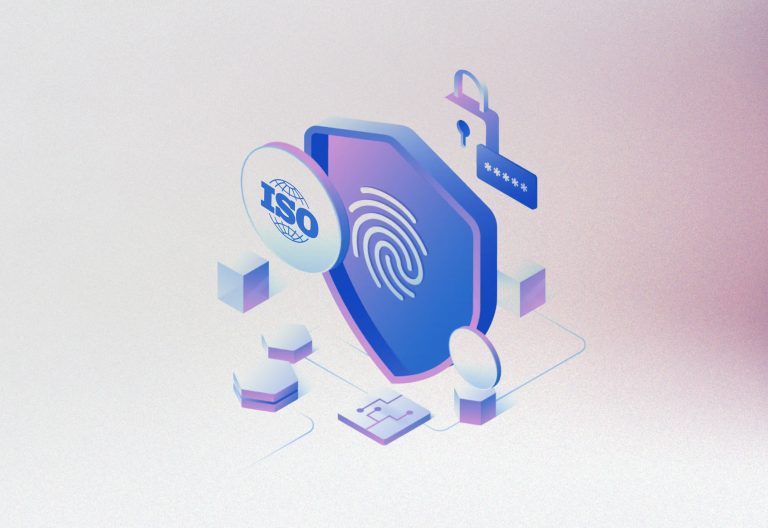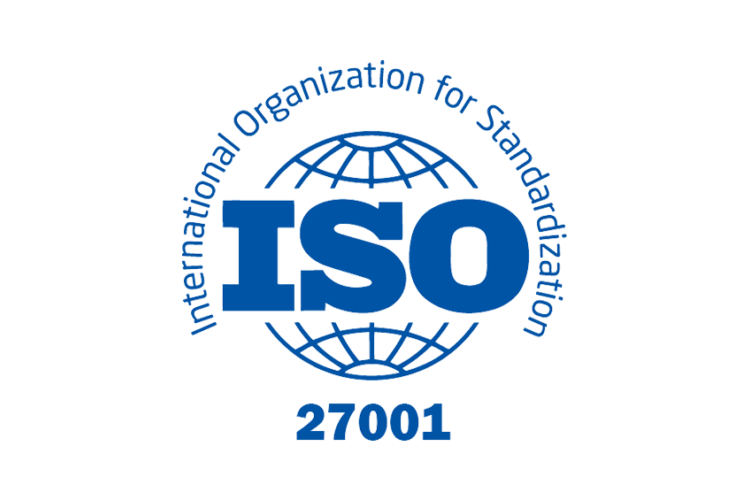With the rapid advance of AI technologies in the digital age, it is very important to manage them responsibly and effectively. Thus, a pioneering compliance standard ISO/IEC 42001:2023 has been developed. It provides a structured framework for organizations to establish, implement, maintain, and continually improve an Artificial Intelligence Management System (AIMS).
This article aims to clarify the core of ISO/IEC 42001:2023, highlighting its critical importance for businesses, especially those using AI in the tech industry. We want to share our more than five years of experience helping various companies implement different compliance standards most efficiently. Dive in to learn more!
Understanding ISO/IEC 42001:2023
ISO/IEC 42001:2023 is the world’s first standard dedicated to artificial intelligence systems management. Its development marks the global recognition of AI’s potential with the complexities and challenges it brings, including ethical considerations, transparency, and accountability.
Key Components and Requirements
The core of ISO/IEC 42001:2023 lies in its comprehensive approach to AI management. It specifies requirements for:
- Establishing an AI management system that aligns with organizational goals.
- Implementing processes ensuring the responsible development, deployment, and maintenance of AI systems.
- Maintaining and continually improving AI systems to adapt to new challenges and opportunities.
- Addressing ethical considerations, guaranteeing transparency, and promoting accountability in AI applications.
The Importance of ISO/IEC 42001:2023 Compliance
Applying the ISO/IEC 42001:2023 standard provides advantages of using full AI’s potential and mitigating its risks at the same time:
- Enhanced Trust and Ethical Assurance: Implementing the standard, organizations commit to ethical AI use, strengthening trust among stakeholders, customers, and regulatory bodies.
- Risk Management: ISO/IEC 42001:2023 provides a structured framework for identifying, assessing, and managing risks associated with AI systems, including ethical risks and biases.
- Competitive Advantage: Companies that comply with the standard can distinguish themselves in the marketplace, showcasing their leadership in responsible AI development and use.
- Regulatory Alignment: As regulatory frameworks for AI evolve, adherence to ISO/IEC 42001:2023 positions organizations favorably about emerging laws and guidelines, reducing compliance risks.
It is important to acknowledge the significance of complying with ISO/IEC 42001:2023 standards, as it is the key to responsibly and effectively leveraging AI’s potential. It is equally crucial to understand the potential risks and consequences of non-compliance. It is essential to comply with standards to maintain operational integrity, ethical standing, and market position.
Contact our experts to get advice on the implementation roadmap for your company.
Potential risks and consequences of non-compliance
Here are the potential risks the delay in implementing the ISO/IEC 42001:2023 standard may potentially cause:
- Ethical and Societal Risks: Neglecting compliance may cause AI systems to perpetuate bias or discrimination, eroding trust and harming society.
- Regulatory and Legal Repercussions: Non-compliance with AI regulations may lead to fines, sanctions, and usage restrictions, impacting an organization’s reputation for legal and regulatory adherence.
- Reputational Damage: The reputation impact of non-compliance can erode customer trust and deter partnerships. AI systems causing unintended consequences due to ethical oversights may worsen the situation.
- Operational Risks: Without a structured AI management framework, there’s an increased risk of operational inefficiencies and system failures, which can impact business objectives and cause disruptions.
- Competitive Disadvantage: Organizations neglecting compliance may fall behind in the market, losing out to competitors prioritizing ethical standards and responsible AI use, impacting market position and opportunities.
Thus, integrating ISO/IEC 42001:2023 standards into organizational AI practices is essential for meeting regulatory requirements and as a strategic approach to ensure ethical, responsible, and effective AI management.
Preliminary Steps for Implementation
Before diving into the formal implementation of ISO/IEC 42001:2023, organizations need to take structured preliminary steps. These initial measures are crucial for setting a solid foundation for compliance and ensuring the process is effective and efficient.
Conducting a Gap Analysis
The first step of the ISO/IEC 42001:2023 standard implementation involves conducting a comprehensive gap analysis. This analysis helps businesses assess their current AI management practices against the requirements specified in the standard.
The key here is to identify any discrepancies or shortcomings in existing systems that could delay or complicate compliance implementation. A thorough gap analysis highlights areas needing improvement and prioritizes actions based on their impact on overall compliance and AI management effectiveness.
Assembling a Team
Another important step towards a successful ISO/IEC 42001:2023 implementation process is to assemble a dedicated team. This team should ideally be composed of individuals with expertise in AI, compliance, risk management, and ethics.
Their role is to ensure that the implementation process aligns with the organization’s strategic objectives and the standard’s requirements. The team is also responsible for driving the project, coordinating between different departments, managing resources, and maintaining momentum throughout the implementation journey.
Iterasec can strengthen your team with our experts, specializing in compliance, AI, and LLM penetration testing. Our experienced professionals provide strategic cybersecurity insights and practical hands-on experience to ensure that your ISO/IEC 42001:2023 implementation meets all the required standards.
A step-by-step guide for ISO/IEC 42001:2023 implementation
Successfully implementing ISO/IEC 42001:2023 requires a detailed and structured approach. By following these steps, businesses can effectively navigate the complexities of ISO/IEC 42001:2023 compliance:
Step 1: Comprehensive Risk Assessment
Start by conducting a detailed risk assessment specific to AI technologies. It should focus on unique risks such as:
- Algorithmic Transparency: Assessing the ability to trace and explain decision-making processes of AI systems.
- Data Integrity Risks: Evaluating risks related to data accuracy, consistency, and protection.
- Ethical Implications: Considering the impact of AI decisions on fairness, non-discrimination, and human rights.
Use specialized tools that align with AI risk management to systematically identify and evaluate these risks.
Step 2: Developing Policies and Objectives
Create policies that specifically address:
- Ethical AI Usage: Guidelines for ethical decision-making processes, ensuring AI respects privacy and human rights.
- Data Governance: Policies on data acquisition, storage, usage, and disposal to protect personal and sensitive information.
- Accountability Structures: Clear accountability frameworks for AI decisions, including roles and responsibilities for oversight.
Objectives should be directly linked to mitigating identified risks and aligning AI operations with ethical, legal, and technical standards.
Step 3: Resource Allocation
Ensure adequate resources are allocated to:
- AI-specific Compliance Tools: Technologies that monitor AI behavior and compliance with ethical standards.
- Training Programs: Targeted education initiatives for staff on AI ethics, legal requirements, and the management of AI systems.
Step 4: Control Implementation and Management
Implement controls that include:
- Audit Trails for AI Decisions: Systems to log and review AI decision processes and outcomes.
- Bias Mitigation Processes: Controls to detect and correct biases in AI algorithms.
- Response Mechanisms: Procedures for responding to AI system failures or ethical breaches.
Regular updates to these controls are essential to address evolving AI capabilities and regulatory landscapes.
Step 5: Documentation and Record Keeping
Document all aspects of AI system development and deployment:
- Development Documentation: Detailed records of AI models’ design, testing, and validation.
- Compliance Documentation: Evidence of compliance with ISO/IEC 42001:2023, including audits, training records, and risk assessments.
- Incident Logs: Records of any issues, how they were addressed, and steps taken to prevent future occurrences.
Step 6: Continuous Monitoring and Review
Establish ongoing monitoring and periodic reviews to:
- Evaluate AI Performance: Continuous assessments against compliance and performance objectives.
- Regulatory Updates: Regular reviews to adapt to new legal and industry standards affecting AI use.
Implementing these detailed steps ensures that AI systems operate within ethical and regulatory boundaries, mitigating risks and enhancing trust in AI applications. Organizations can effectively manage their AI technologies in a responsible and compliant manner by focusing on specific policies and controls recommended for ISO/IEC 42001:2023 compliance. If you’re looking for support in implementing the ISO/IEC 42001:2023 standard, Iterasec is here to offer our expertise and help guide you through the compliance journey.
Reach out to our experts to get advice on the ISO/IEC 42001:2023 step-by-step implementation guide.
Certification Process
Achieving ISO/IEC 42001:2023 certification validates an organization’s commitment to robust Artificial Intelligence Management Systems (AIMS), following a process similar to other ISO standards related to IT and digital security, such as ISO 27001.
Selection of an Accredited Certification Body
Choose a certification body with expertise in AI and a deep understanding of ISO standards to ensure the certification is credible and respected.
The Audit Process
The audit assesses the AI management system against the standard’s criteria, reviewing policies, procedures, and operations. Full access to documentation and processes is essential.
Addressing Any Identified Gaps
Quickly address any issues found during the audit by updating policies or introducing new controls to meet the standard’s requirements.
Tips for a Successful Certification Audit
- Thorough Preparation: Ensure all system components comply with the standard well in advance.
- Engagement and Communication: Keep clear communication with all involved for a smoother process.
- Documentation and Evidence: Maintain documentation well-organized and easily accessible.
- Proactive Issue Management: Address potential issues early and integrate continuous improvements.
This streamlined approach helps organizations efficiently secure ISO/IEC 42001:2023 certification, enhancing their AI management in line with established ISO guidelines.
Maintaining Compliance
Maintaining ISO/IEC 42001:2023 certification requires ongoing efforts to adapt to evolving standards, technologies, and regulations. Here’s a streamlined approach to ensuring continuous compliance and improvement:
Strategies for Maintaining Compliance
- Regular Training and Awareness: Continuously educate staff on the latest AI management practices and ethics to align with ISO/IEC 42001:2023.
- Integration into Business Processes: Incorporate compliance deeply within core business operations.
- Leveraging Technology: Use technology to monitor compliance, manage documents, and identify areas needing updates.
Regular Audits
Regular internal and external audits are crucial. They identify deviations from the standard and drive continuous improvement. These should be scheduled routinely to ensure the AI management system remains compliant and responsive to changes.
Policy Updates and Continuous Improvement
- Policy Reviews: Regularly update policies to reflect new laws, technology standards, and ethical considerations, addressing emerging risks and changes.
- Continuous Improvement: Use audit feedback, incident management, and performance monitoring to refine practices. Set and track improvement objectives to enhance the AI management system continuously.
Staying compliant with ISO/IEC 42001:2023 is an ongoing commitment to ensure organizations remain at the cutting edge of ethical AI management, meeting regulatory demands and ethical standards.
Conclusion
This article aimed to prove that ISO/IEC 42001:2023 isn’t just about compliance; it’s about building a framework that enhances your organization’s use of AI, ensuring it’s ethical, secure, and effective. Embracing this standard strengthens your cybersecurity defenses and enhances your reputation as a trustworthy business partner.
If your organization currently uses AI or is planning to do so in the future, it is critical to begin your compliance journey. This strategic move can secure your operations and prepare your business for a future where AI plays a central role.
For those ready to take this step but seeking guidance, Iterasec is here to help. We specialize in cybersecurity, and our expertise extends beyond just compliance guidance. At Iterasec, we also offer specialized services in AI and LLM pen testing, cybersecurity audits, consulting, threat modeling, managed application security, and much more. Drop us a line to work together to ensure your AI systems are compliant, secured, and optimized to drive success in your business operations.


